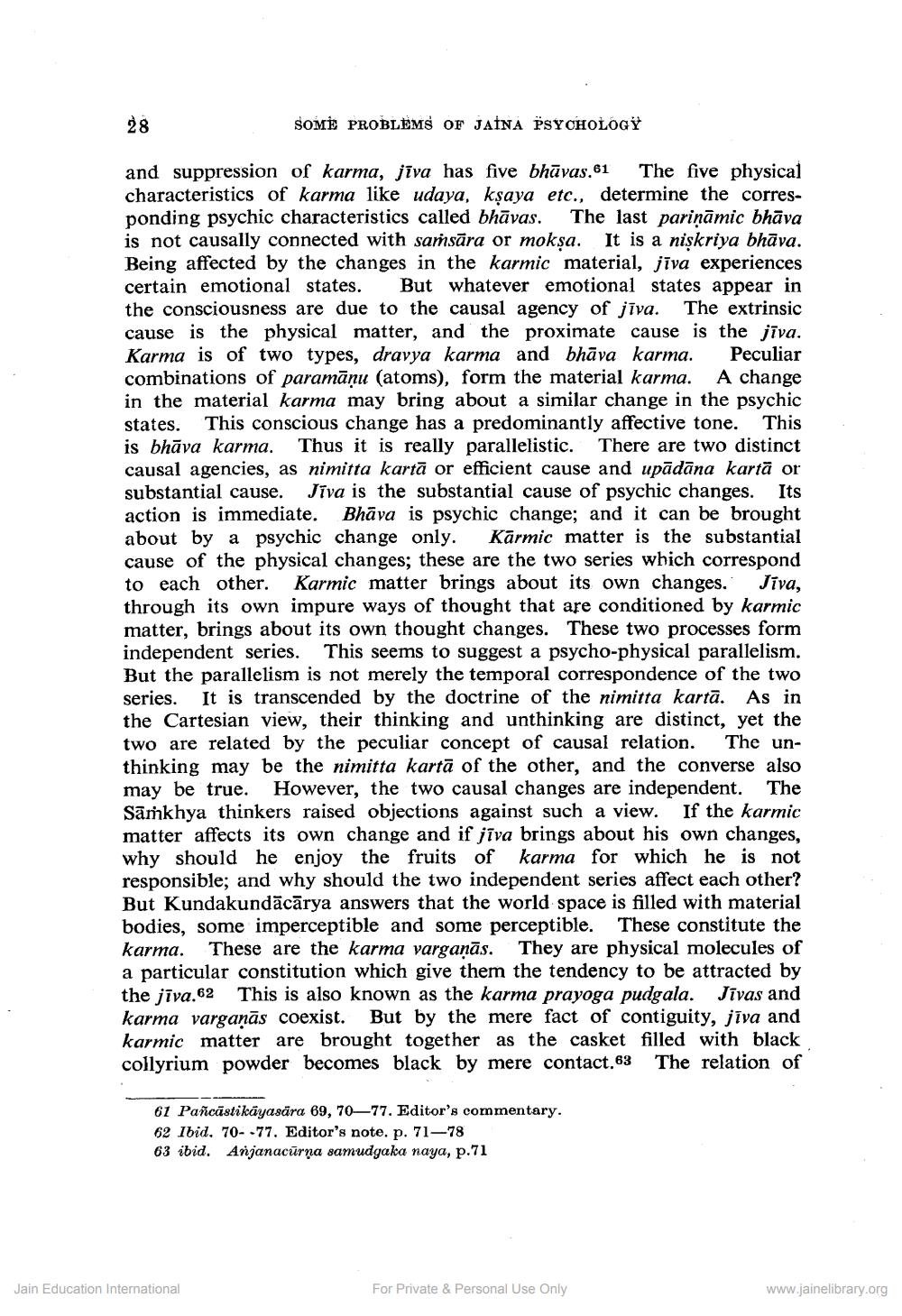________________
28
SOME PROBLEMS OF JAİNA PSYCHOLOGY
and suppression of karma, jīva has five bhāvas 61 The five physical characteristics of karma like udaya, kşaya etc., determine the corresponding psychic characteristics called bhāvas. The last pariņāmic bhāva is not causally connected with saṁsāra or moksa. It is a niskriya bhāva. Being affected by the changes in the karmic material, jīva experiences certain emotional states. But whatever emotional states appear in the consciousness are due to the causal agency of jīva. The extrinsic cause is the physical matter, and the proximate cause is the jīva. Karma is of two types, dravya karma and bhāva karma. Peculiar combinations of paramāņu (atoms), form the material karma. A change in the material karma may bring about a similar change in the psychic states. This conscious change has a predominantly affective tone. This is bhāva karma. Thus it is really parallelistic. There are two distinct causal agencies, as nimitta kartā or efficient cause and upādāna kartā or substantial cause. Jīva is the substantial cause of psychic changes. Its action is immediate. Bhāva is psychic change; and it can be brought about by a psychic change only. Kārmic matter is the substantial cause of the physical changes; these are the two series which correspond to each other. Karmic matter brings about its own changes. Jiva, through its own impure ways of thought that are conditioned by karmic matter, brings about its own thought changes. These two processes form independent series. This seems to suggest a psycho-physical parallelism. But the parallelism is not merely the temporal correspondence of the two series. It is transcended by the doctrine of the nimitta kartā. As in the Cartesian view, their thinking and unthinking are distinct, yet the two are related by the peculiar concept of causal relation. The unthinking may be the nimitta kartā of the other, and the converse also may be true. However, the two causal changes are independent. The Sāṁkhya thinkers raised objections against such a view. If the karmic matter affects its own change and if jīva brings about his own changes, why should he enjoy the fruits of karma for which he is not responsible; and why should the two independent series affect each other? But Kundakundācārya answers that the world space is filled with material bodies, some imperceptible and some perceptible. These constitute the karma. These are the karma vargaņās. They are physical molecules of a particular constitution which give them the tendency to be attracted by the jīva.62 This is also known as the karma prayoga pudgala. Jīvas and karma varganās coexist. But by the mere fact of contiguity, jīva and karmic matter are brought together as the casket filled with black collyrium powder becomes black by mere contact.63 The relation of
61 Pañcāstikāyasāra 69, 70–77. Editor's commentary. 62 Ibid. 70-77. Editor's note. p. 71-78 63 ibid. Anjanacūrna samudgaka naya, p.71
Jain Education International
For Private & Personal Use Only
www.jainelibrary.org




